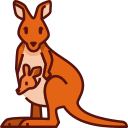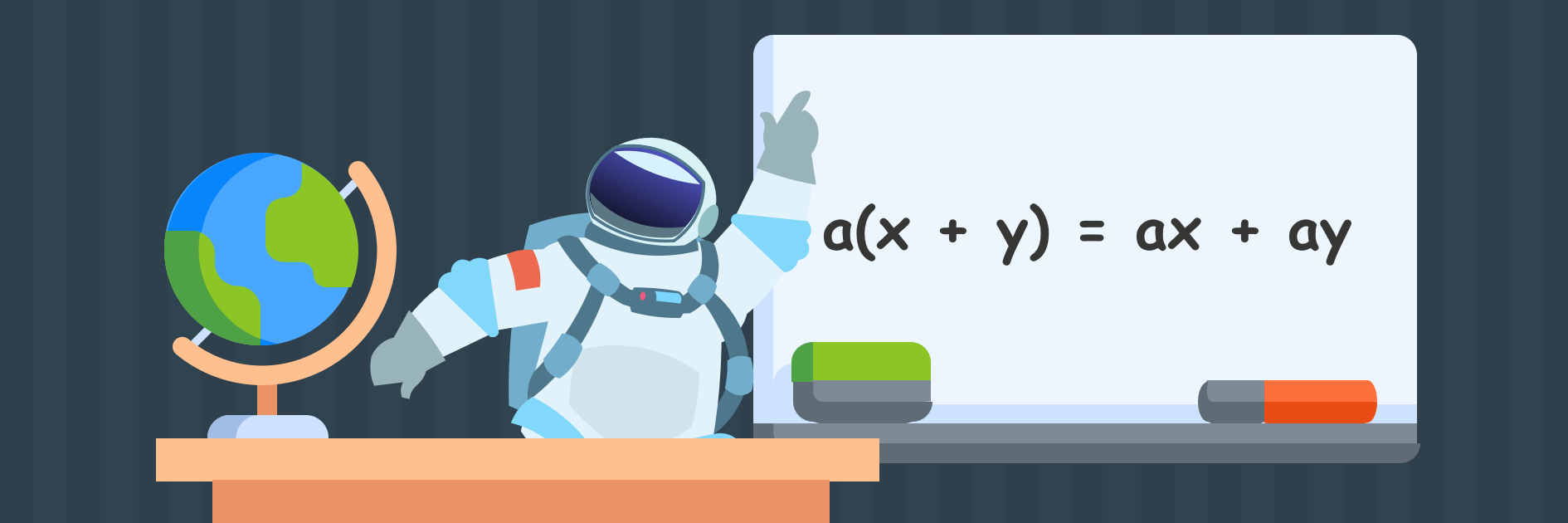9 Describing relationships with variables
When it comes to problem solving, being able to express a relationship mathematically is a powerful thing.
However, the most difficult thing is to convert the information you have at hand to an algebraic expression. The key thing is to remember that the symbols (usually letters of the alphabet) represent quantities and behave the same way as numbers do.
For example, if we are traveling at [latex]100km/h[/latex], the distance we cover is [latex]100 km[/latex] for each hour that passes. After 1 hour, we've travelled 100km, after 2 hours, we've travelled 200km and so on. So overall, if we were travelling at a steady speed, we could write [latex]100h[/latex] to represent the number of kilometres past, where [latex]h[/latex] is the number of hours. We could also use [latex]100t[/latex], where [latex]t[/latex] represents the number of hours instead of [latex]h[/latex] - what we actually call the variable won't change the mathematics.
If we have more than one variable, we need to use a different symbol for it. For example, there is a classic problem about looking at a number of cows and chickens and counting the legs. For each cow, there are 4 legs and for each chicken, there are 2 legs.
It wouldn't work to represent this as [latex]4L+2L[/latex] because that would mean for each [latex]L[/latex], we would have 4 and 2 of something. So we need to think carefully about how the equations work.
If there were 3 cows and 5 chickens, the number of legs would be [latex](3 \times 4) + (5 \times 2) = 22[/latex], i.e. there are 3 cows, so we multiply 3 by 4 legs, and there are 5 chickens, so we multiply 5 by 2 legs. If there were a different number of cows and different number of chickens, the 3 and the 5 would change, but the number of legs per animal would stay the same.
So let's use an m to represent the number of cows (because they say moo) and b to represent the number of chickens (since they have beaks). This means the number of legs will be [latex](m \times 4) + (b \times 2)[/latex].
Since we're using algebra and we want to avoid confusing multiplication symbols for x's, we rewrite this without them, and we also put the numbers before the variables by convention. So we will have [latex]4m+2b[/latex], and we could go a step further by saying that this is equal to the number of legs (L).
This would give us our final expression
[latex]L=4m+2b[/latex]
It's usually a good idea at this point to ensure you can state an equation in plain language in a simple sentence, just to make sure everything makes sense. In the case of the equation above, we could say "the number of all the animals' legs put together is equal to four times the number of cows plus two times the number of chickens in the paddock." It doesn't matter if the sentence sounds a little odd as long as it remains logical.
Algebraic expressions

|
Jean charges $40 for the first hour of tutoring and then $25 for each additional hour in given week. Create a model she can use to work out her income each week. |

|
Kim can pay $10 for an eco-cup and then save 0.30c each time she buys a standard coffee. Write a model that can show her total savings based on the number of coffees she buys using the eco-cup. |

|
The distance between Chengdu and Didong is 250km but it is necessary to stop on the way for a total of 30 minutes to get through toll-gates etc. Write an expression that can calculate the total time depending on how fast you travel on average. |

|
There are a number of kangaroos, emus and dingoes in a paddock. Write an expression for the number of legs you can see in total based on the number of each animal. |
You may have found that it is not always easy to write expressions from the information given in a situation. Sometimes this is the hardest part of problem solving – identifying which are important for your expression, what their coefficients (the number multiplying them) should be and how to combine them.
Common expressions
Some examples of common words, how they are used, and the algebraic expressions they might lead to are shown in the following table.
| Word | Operation | Example | As an equation |
| Sum | Addition | The sum of Adam and Brenda's earning is $500 | [latex]a+b=$500[/latex] where a and b are Adam and Brenda's individual earnings |
| Difference | Subtraction | The difference between Adam and Brenda's age was 7 years | [latex]a-b=7[/latex] where Adam is 7 years older than Brenda |
| Product | Multiplication | The expected loss is the product of the average payout and the probability of failure | [latex]l=af[/latex] where l is the expected loss, a is the average payout and f is the probability of failure |
| Times | Multiplication | She earns three times my salary | [latex]h=3m[/latex] where h is her salary, and m is my salary |
| Less than | Subtraction | He predicted it would take 5 years less than expected. | [latex]Y=E-5[/latex] where Y is the numbers of years he predicted it would take, and E was the expected time |
| Total | Addition | The total time taken to watch the three movies was 9 hours. | [latex]t=m_1+m_2+m_3=9[/latex] where t is the total time and [latex]m_1[/latex], [latex]m_2[/latex] and [latex]m_3[/latex] are the running times of the 3 movies respectively |
| More than | Addition | This drink costs $20 more than the cheapest one. | [latex]d=c+20[/latex] where d is the cost of this drink and c is the cost of the cheapest one |
| Times more than | Percentage / multiplication | This drink costs 2 times more than the cheapest one. | [latex]d=2c[/latex] where D is the cost of this drink, C is the cost of the cheapest drink – not that the drink costs 2 times as much would mean double, but 2 times more implies it’s 2 times the amount added on to the price of the cheapest drink. |


